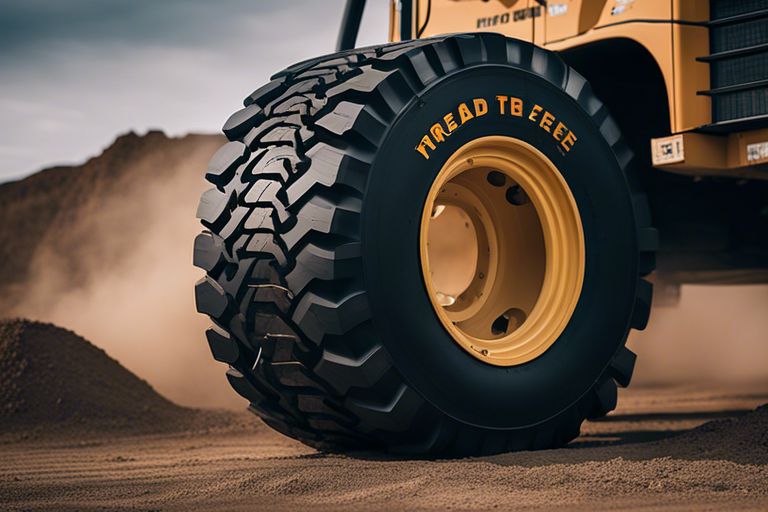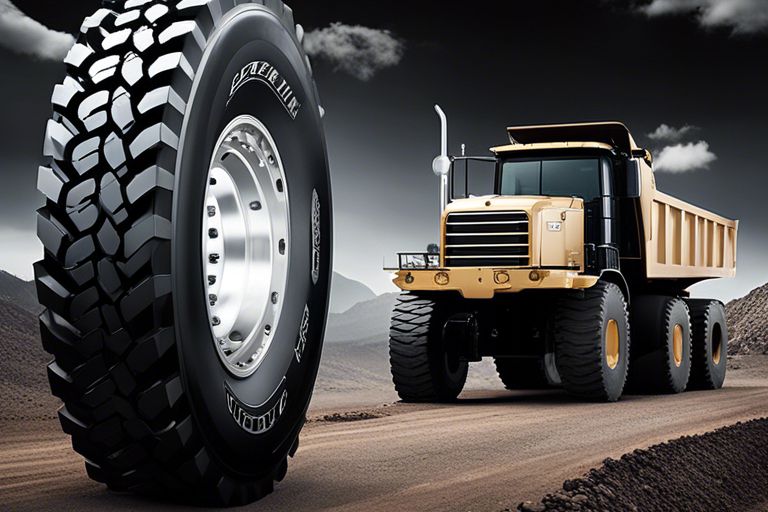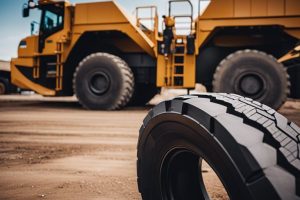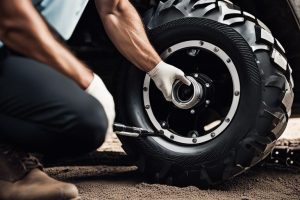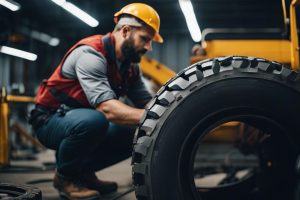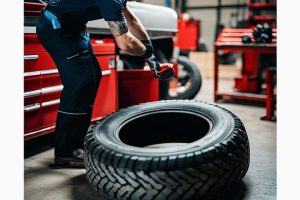Discovering the ideal off-the-road (OTR) tires is crucial for any professional in the construction, mining, or agriculture industry. Selecting the right OTR tires can make a significant difference in terms of performance, safety, and overall efficiency of heavy equipment. In this comprehensive guide, we will probe into the imperative factors to consider when choosing OTR tires, from size and tread pattern to ply rating and compound. Equip yourself with the knowledge needed to make informed decisions that will not only maximize the lifespan of your tires but also optimize the productivity of your heavy machinery.
Key Takeaways:
- Understand Your Needs: Before selecting OTR tires, analyze the terrain, load capacity, weather conditions, and industry requirements to ensure you choose the right tire for the job.
- Consider Tire Features: Look for key features such as tread pattern, depth, casing durability, and sidewall protection to ensure optimal performance and longevity of the OTR tires.
- Consult with Experts: Seek guidance from tire professionals or manufacturers to get personalized recommendations based on your specific needs and budget constraints when selecting OTR tires for your heavy-duty equipment.
Understanding OTR Tires
If you are in the market for Off-the-Road (OTR) tires, it is crucial to have a solid understanding of the different types available and the key components and technologies that drive their performance. OTR tires are specifically designed for heavy vehicles that operate off paved roads in challenging terrains. These tires are a critical component of construction, mining, agricultural, and industrial equipment, making the selection process a vital decision for professionals in these fields.
Overview of OTR Tire Types
As far as selecting OTR tires, it’s imperative to consider the specific application and terrain where the tires will be used. There are various types of OTR tires, each designed for different purposes. The main OTR tire types include rigid dump truck tires, loader tires, motor grader tires, and rubber tracks. Recognizing the differences between these types is crucial in ensuring optimal performance and longevity for your equipment.
| Tire Type | Description |
| Rigid Dump Truck Tires | Designed for hauling heavy loads in tough conditions |
| Loader Tires | Provide traction and stability for front-end loaders |
| Motor Grader Tires | Offer precision and control for grading operations |
| Rubber Tracks | Designed for use on compact equipment in challenging terrains |
| Skid Steer Tires | Provide durability and maneuverability for skid steer loaders |
Key Components and Technologies
Understanding the key components and technologies of OTR tires is crucial for making an informed decision. The main components of OTR tires include the tread, sidewall, bead, casing, and inner liner. These components work together to provide optimal traction, load-bearing capacity, and durability in challenging environments. Additionally, advancements in tire technologies such as advanced compounds, tread patterns, and casing designs have improved tire performance and longevity.
The tread of an OTR tire is designed to provide traction on various surfaces and resist wear and tear. The sidewall protects the tire from impacts and cuts, while the bead ensures proper fitment to the wheel. The casing provides structural stability and support, while the inner liner maintains tire pressure and prevents air leakage. The combination of these components and technologies is imperative for ensuring the safety and efficiency of your equipment in challenging off-road conditions.
Factors to Consider
Little is more critical when selecting the right OTR tires for your equipment than considering specific factors that can impact performance, durability, and safety. By carefully evaluating these key aspects, you can ensure that you choose the perfect OTR tires for your needs.
Determining the Operating Conditions
The operating conditions play a crucial role in determining the type of OTR tires that will best suit your application. Factors such as the terrain, weather conditions, and frequency of use can all influence the performance and longevity of your tires. It is crucial to consider these factors carefully before making a selection.
When evaluating the operating conditions, it is important to assess whether you will primarily be operating on rough terrain, in wet or muddy environments, or on hard, flat surfaces. Understanding these conditions will help you choose OTR tires that are designed to withstand the specific challenges they will face.
Load Capacity and Tire Size
Any professional involved in selecting OTR tires knows the significance of considering the load capacity and tire size. These two factors are interrelated and directly impact the overall performance and safety of your equipment. It is crucial to select OTR tires that can support the maximum load of your machinery while also ensuring proper fitting and compatibility with the rim size.
Plus, choosing the correct tire size is crucial for maintaining optimal stability and traction. Oversized or undersized tires can lead to uneven wear, reduced performance, and potential safety hazards. It is advisable to consult with manufacturers or industry experts to determine the most suitable tire size for your specific equipment and operational needs.
After reviewing these key considerations, you will be equipped to make an informed decision when selecting the perfect OTR tires for your application.
The How-To Selection Process
Your How to select the right OTR tyre for your operation – Goodyear starts with understanding the specific needs of your operation. Whether you are in construction, mining, or industrial work, the right OTR tire can make a significant difference in productivity and safety.
Tips for Evaluating Tire Performance
When evaluating tire performance, consider factors such as load-carrying capacity, traction, durability, and resistance to cuts and punctures. Look for tires that are specifically designed to handle the conditions of your work environment. Additionally, ensure that the tires you choose are compatible with the machinery and equipment they will be used on.
- Load-carrying capacity: Choose tires that can support the weight of your equipment and materials.
- Traction: Look for tires with a tread pattern that provides excellent grip on various surfaces.
- Durability: Opt for tires that are built to last in challenging environments.
- Resistance to cuts and punctures: Select tires that can withstand sharp objects commonly found in your work area.
This comprehensive evaluation process ensures that you select tires that will enhance your operation’s efficiency and safety.
Decoding Tire Specifications and Ratings
One important aspect of choosing the right OTR tire is deciphering tire specifications and ratings. Understanding the size, load index, speed rating, and ply rating of a tire is crucial in ensuring it meets the requirements of your equipment and operation.
A deeper understanding of these specifications will help you make an informed decision when selecting tires that are best suited for your specific needs. Pay close attention to these details to avoid any compatibility issues and to maximize the performance of your machinery.
Maintenance and Care for Longevity
Routine Inspections and Best Practices
For long-lasting performance of your OTR tires, routine inspections are crucial. An inspection schedule should be in place to check for tire pressure, tread depth, signs of damage, and overall condition. Best practices include regularly monitoring tire pressure, avoiding overloading, and ensuring proper alignment and tire rotation.
Handling Repairs and Replacements
Careful consideration is needed when it comes to handling repairs and replacements for OTR tires. It is recommended to consult a professional technician to assess whether a tire can be safely repaired or if it needs to be replaced. Additionally, new tires should be of the same type, size, and ply rating as the original tires to ensure optimal performance and safety.
Care should be taken when handling repairs and replacements to avoid any risks of further damage or compromising the tire’s integrity. Any repairs should be done according to industry standards and manufacturer recommendations to maintain the tire’s structural integrity and performance.
Making the Purchase
Where to Buy OTR Tires
All professionals looking to purchase OTR tires should consider reputable dealers and suppliers. The most reliable sources for OTR tires are authorized dealerships, specialized tire shops, and online retailers that focus on heavy-duty tires. These outlets often have a wide selection of brands and sizes to choose from, ensuring that you find the perfect fit for your specific needs.
When considering where to buy your OTR tires, it’s vital to prioritize vendors with a solid reputation for quality and customer service. The best sources will offer expert advice, competitive pricing, and reliable warranties to ensure you are getting the best value for your investment.
Evaluating Cost vs. Value
Value is a crucial factor to consider when purchasing OTR tires. While cost is important, it should not be the sole determining factor. To evaluate cost vs. value, look for tires that offer durability, performance, and longevity. Opting for cheaper tires may save you money upfront, but they could end up costing you more in the long run due to frequent replacements and decreased productivity.
Consider the total cost of ownership, including maintenance and potential downtime, when assessing the value of OTR tires. It is worthwhile to invest in high-quality tires from reputable brands that offer a balance of cost-effectiveness and performance to ensure optimal results for your heavy-duty equipment.
1. Consider the terrain where the tires will be used.
2. Determine the load capacity needed for the vehicle.
3. Choose the right tire size for optimal performance.
4. Select the appropriate tread pattern for specific needs.
5. Check for tire durability and resistance to wear and tear.
6. Compare prices and find the best value for your budget.
To wrap up
Following this complete guide on how to choose the perfect OTR tires, professionals in the industry can confidently make informed decisions when selecting the right tires for their specific needs. By considering the key factors such as tire size, tread pattern, ply rating, and intended application, professionals can ensure optimal performance and safety for their heavy-duty equipment. Remember to prioritize quality, durability, and efficiency to maximize the lifespan and productivity of your OTR tires. With this comprehensive knowledge, professionals can navigate the options available in the market and select the perfect OTR tires that will deliver reliable performance in challenging off-the-road conditions.
A
FAQ
Q: What factors should I consider when choosing OTR tires?
A: When choosing OTR (Off-The-Road) tires, consider factors such as tread pattern, ply rating, compound type, tire size, and terrain conditions. These factors will impact the tire’s performance, durability, and efficiency in various working environments.
Q: How do I determine the right tire size for my equipment?
A: To determine the right tire size for your equipment, refer to the manufacturer’s guidelines or sidewall markings on the existing tires. Match the size specifications including width, diameter, and rim size to ensure proper fit and optimal performance. Consulting with a tire professional can also help in selecting the right size.
Q: What are some common tread patterns for OTR tires and their applications?
A: Common tread patterns for OTR tires include rock, lug, rib, and smooth. Rock patterns are ideal for rocky terrains, lug patterns for loose soils, rib patterns for hard surfaces, and smooth patterns for industrial and underground applications. Choosing the right tread pattern based on the working conditions will enhance traction and overall performance.
